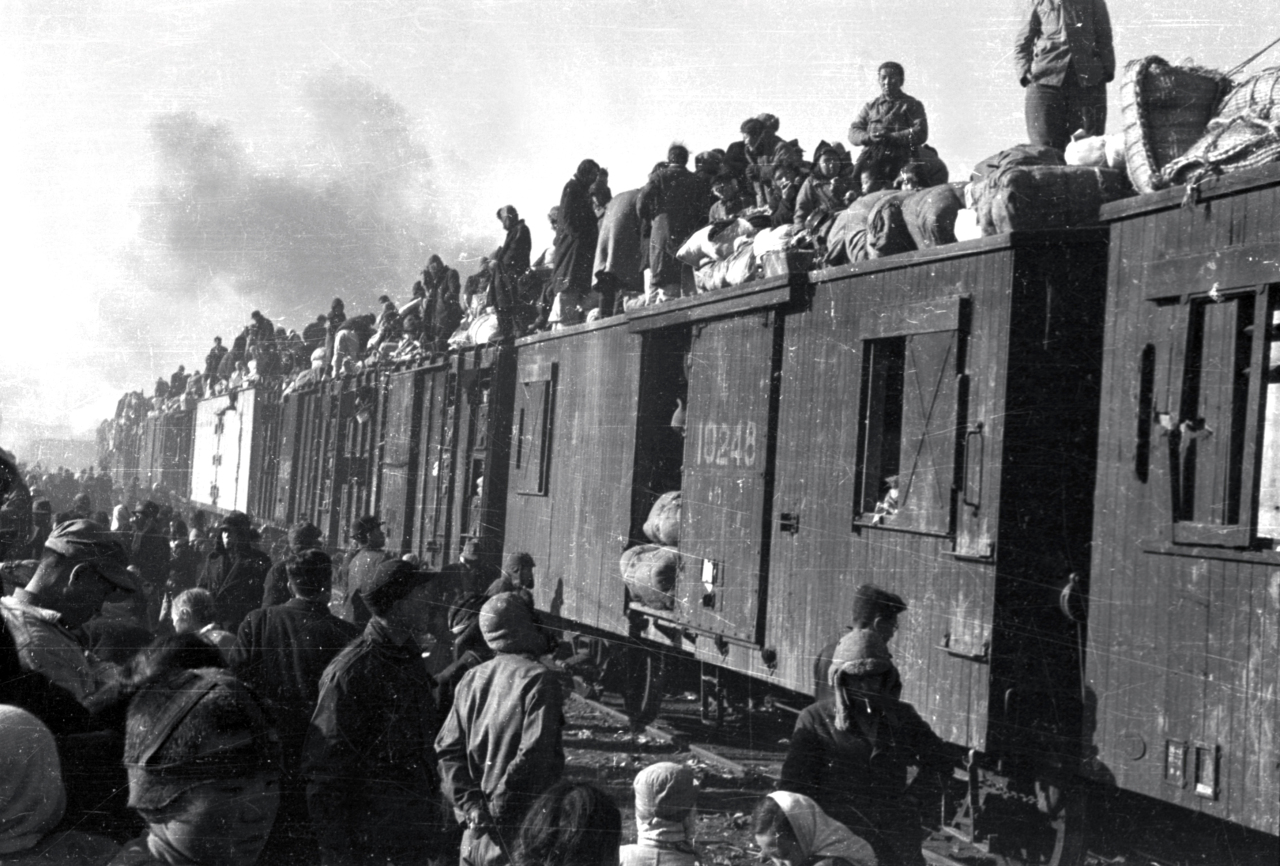[Korean War Anniversary] ‘Just another day’ still remembered 70 years on
By Choi He-sukPublished : June 24, 2020 - 13:29

The Korean War was a much more dangerous time for civilians than soldiers, with civilians facing a host of dangers ranging from massacres and abductions to starvation and forced conscription.
At a time when the population of the Korean Peninsula stood at about 30 million, more than 3.5 million civilians are estimated to have been killed, wounded or missing as a direct result of the war. In comparison, the combined number of military members who died or went missing -- South Korean and allied forces, as well as North Korean and Chinese forces -- is estimated to be somewhere between 600,000 and 920,000.
This is a glimpse into the lives of civilians during the three-year conflict that changed their lives.
Just another day
Yoo Young-yeon, 92, recalls June 25, 1950, beginning much like any other day.
“Everything was normal. We didn’t know anything was happening. They said there was a radio broadcast but we didn’t know anything,” she said. She says she began the day as usual, going about her household chores and tending to her husband and his cousin, who had come to stay with them a few weeks earlier.
Her husband, Lee Sang-kook, was at the time a colonel in the Army serving as an aide to South Korean Army chief of staff Chae Byung-duk. The cousin, she later found out, was a member of the Workers’ Party of South Korea.
“They had breakfast, and (the cousin) even heated up water to take a bath before leaving. But not 10 minutes after he went, an orderly came (to get my husband).”
Her husband rushed to the Army headquarters. Later that day or the day after, she recalls hearing planes and gunfire.
Kim Ok-hee, who was at the time a 19-year-old Chung-Ang University sophomore, tells a similar story.
“I didn’t realize what was really happening until I saw streams of people pouring into my neighborhood in Seoul, who’d walked all the way from Uijeongbu and up North,” said Kim, now 89.
“Lots of people were evacuating the capital, but my family stayed in Seoul because we didn’t have anywhere else to go. Also, we thought this would end soon.”
Kim’s family had come to Seoul from Pihyon County, North Pyongan Province, in what is now North Korea, to flee the communists, who had taken away private land and freedom of religion.
Fleeing the war
Soon after, Yoo’s husband told her to leave the capital, and Yoo and her two children -- a girl of 2 and a boy less than a month old -- left for Daejeon.
“I went with one of my husband’s aides, his wife and their newborn, and a sergeant and his wife, whose belly was as big as Namsan,” Yoo said, using a common Korean metaphor to describe a woman nearly due to give birth. Namsan is a mountain in central Seoul.
After a few days in Daejeon, Yoo went further south to Daegu and then on to Busan.
After a brief return to Seoul when the allies pushed the North Koreans back for a time, Yoo again fled to Busan, where she spent most of the war.
Busan and the surrounding area comprised the only region that was never taken by the communist forces throughout the three-year war, and the city provided refuge for people from all over the country.
While in Busan, Yoo and her family lived somewhere in Dongnae-gu, and there she glimpsed another side of the war.
“Just a little way away from the house, there was a prisoner-of-war camp and the anti-communist prisoners would be marched out during the day, and they’d sing and sit about in the field by the house we lived in,” Yoo recalled, adding that most of them were teachers who had been captured by the North’s military and forced into service.
These captured North Korean soldiers had been forcibly conscripted despite being anti-communist in their thinking.
“The whites were later released, and they’d just go to houses and people would feed them, because, you know, they had nowhere to go.”
The word “whites” was used to refer to anti-communist prisoners of war, as opposed to “reds” for communists.
Occupied Seoul
Those who couldn’t escape from areas that were taken by the North suffered from the ideological divide.
Neighbors turned on each other, and children were reduced to begging for food. Civilians were oppressed and even executed for “offenses” as minor as being related to a soldier on the “wrong side.”
“My parents were in Seoul, and the (South Korean civilian) communists in the area came and took everything they had, down to the last grain of rice, because their son-in-law was a soldier,” Yoo said.
Yoo’s mother was also rounded up by the North Korean military for execution but narrowly escaped thanks to a North Korean officer who recognized her from before the war and remembered how she had helped the poor.
For Kim, living in communist-occupied Seoul was a reminder of what she had fled.
“In a matter of days, Seoul was captured by the communists, the ones I’d escaped from,” she said.
Hearing that rice was being rationed out at a district office, Kim -- the eldest of eight siblings -- took a younger sister to sign up for rations, not realizing that the office was drafting people into the North’s army.
“There were many people gathered at the office, and we were standing at the back of the line,” she said.
“When it hit me that they weren’t giving out rice, my sister and I slowly walked back to the exit, to avoid being noticed. And then we ran. I can still recall my heart pounding so fast and feeling frightened.”
For a while after that, Kim had to stay away from home as North Korean officials had come looking for her.
“I wandered around the streets, hiding from place to place.”
“That summer was steaming hot,” she recalled. “On the streets, there were piles of dead bodies, maggots and flies covering them. I remember walking around the corpses, praying that they weren’t my friends or people I knew.”
Life under constant threat and bombers flying overhead continued for three months -- until Sept. 28, 1950, when the allies recaptured Seoul.
“We were relieved, and thought the war was nearing its end,” she said.
But the freedom was short-lived. On Jan. 4, 1951, the capital was retaken by the Chinese and North Korean forces, as the allies retreated. This time, Kim’s family had no choice but to leave Seoul to save their lives.
“We walked for days, took trains sometimes, and reached Busan eventually,” she said.
While in Busan, Kim helped her parents by sewing and selling garments and other goods to support their large family. While some of the other students continued their education in the port city, she never returned to school.
“When the war was nearing its end, we were able to return back to Seoul,” she said. “But it wasn’t the same. The city was completely destroyed, and a lot of the people I knew were gone,” she said. “It was such a tragedy. When I think about it today, I am just grateful to God that I survived.”
By Choi He-suk (cheesuk@heraldcorp.com)
and Ahn Sung-mi (sahn@heraldcorp.com)



















![[Today’s K-pop] Treasure to publish magazine for debut anniversary](http://res.heraldm.com/phpwas/restmb_idxmake.php?idx=642&simg=/content/image/2024/07/26/20240726050551_0.jpg&u=)